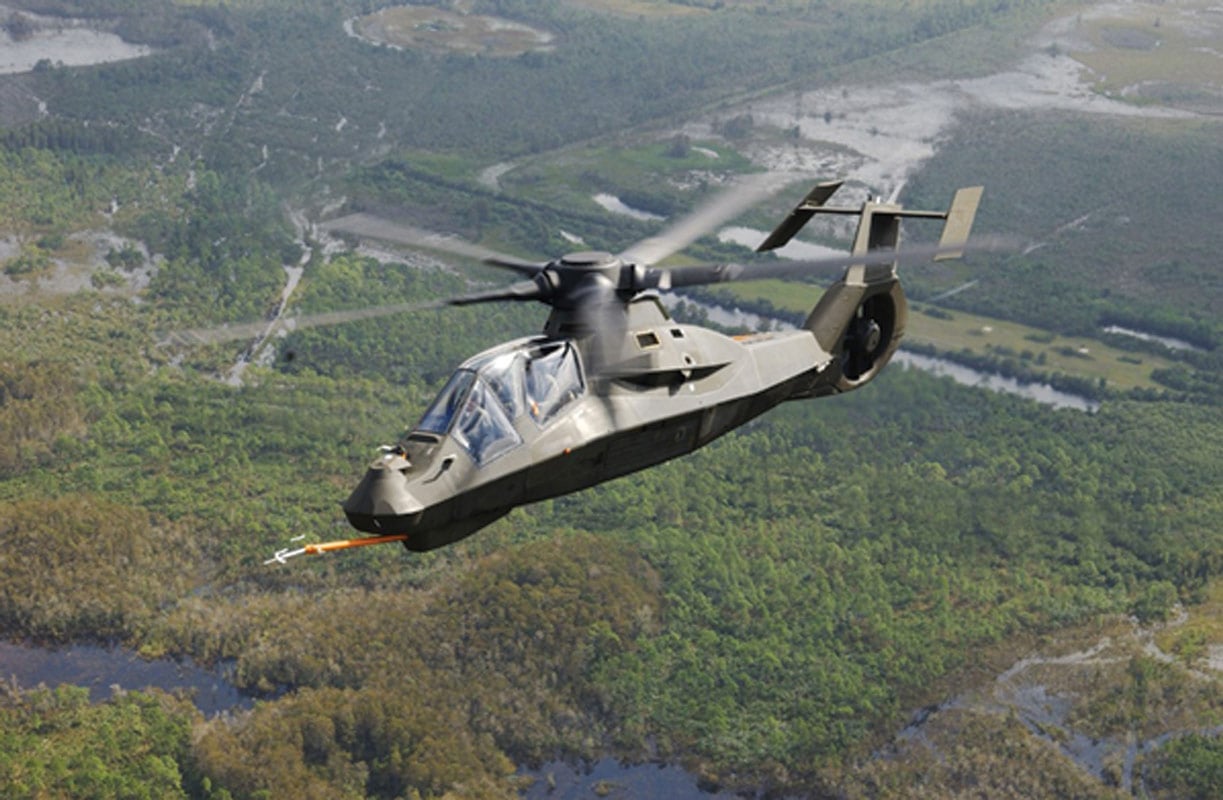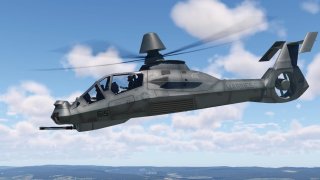RAH-66 Comanche: The Best 'Helo' to Never Fly for the U.S. Army
The RAH-66 Comanche, envisioned as a stealth reconnaissance and attack helicopter by Boeing and Sikorsky, was set to revolutionize the U.S. Army’s aerial capabilities in the 1990s.
Summary and Key Points: The RAH-66 Comanche, envisioned as a stealth reconnaissance and attack helicopter by Boeing and Sikorsky, was set to revolutionize the U.S. Army’s aerial capabilities in the 1990s.

-Designed with advanced stealth features, it was fast, agile, and highly survivable. Initially, the Army planned for a fleet of 1,213 Comanches, later reduced to 650, but the program was ultimately canceled due to cost overruns, technical challenges, and shifting military priorities.
-While the decision remains controversial, with some arguing it was a missed opportunity akin to the F-22 Raptor, the Army opted to modernize existing helicopters and focus on UAV development instead.
How the U.S. Army Missed Out on the RAH-66 Comanche's Advanced Capabilities
The U.S. Army in the 1990s wanted to upgrade its aging Kiowa OH-58D and AH-1 Cobra helicopters. The RAH-66 Comanche was born. It was designed to be a stealth reconnaissance and attack helicopter developed by Boeing and Sikorsky. The Comanche was intended to be a highly advanced, stealthy, and versatile platform capable of performing reconnaissance, light attack, and air-to-ground missions.
Fast and agile, with a top speed of around 200 miles per hour, this bird could hover out of ground effect at an altitude of 10,000 feet. It also had a maximum range of 345 miles and an operational ceiling of 18,000 feet. The estimated cost of each Comanche was around $30 million.
The Comanche was designed to be highly survivable, with features like low radar cross section, infrared signature reduction, and advanced self-protection systems.
What the U.S. Army Wanted
The Army originally envisioned a fleet of 1,213 Comanches. The number was later reduced to 650. Ultimately, a total of zero would go on to serve. The Pentagon worried about the helicopter’s ability to meet the changing requirements of modern war. Comanches were designed to fight the Soviet menace, but they would not have been ready until well after the Soviet Union collapsed and America was ensconced in its unipolar moment.
Had production continued as originally planned on the RAH-66 Comanche, it would not have entered service until the second decade of the Global War on Terror, a totally different fight. Rather than build what most experts agree would have been the world’s finest helicopter, the Army chose to invest in modernizing its existing fleet of helicopters and building unmanned aerial vehicles.
Terminating the Comanche program was a highly controversial decision at the time. Proponents argued the Comanche would have provided the Army with a much-needed capability for reconnaissance and light attack missions. They also argued the Comanche’s advanced stealth and survivability features would have been favorable in the kind of future conflicts the U.S. military faces now.
Others, however, argue that the cancellation was the right decision. They point to the program’s cost overruns, the Comanche’s technical challenges, and the changing nature of warfare, all of which made the Comanche less relevant. These detractors also figured the Army’s decisions to invest in upgrades to its existing helicopter fleet and in developing UAVs were more cost-effective and flexible approaches to meeting the Army’s needs.

Of course, these cogitations are pure hogwash.
What the Army Got
The RAH-66 Comanche would have been to America’s helicopter fleet what the F-22 Raptor is to the U.S. air fleet.
But the Army, and its political authorities, lacked the vision needed to turn the Comanche into a real fighting force.
The Comanches should have been built in the numbers originally planned. The failure to do so is a serious missed opportunity for the United States.
Author Experience and Expertise: Brandon J. Weichert
Brandon J. Weichert, a National Interest national security analyst, is a former Congressional staffer and geopolitical analyst who is a contributor at The Washington Times, the Asia Times, and The-Pipeline. He is the author of Winning Space: How America Remains a Superpower, Biohacked: China’s Race to Control Life, and The Shadow War: Iran’s Quest for Supremacy. His next book, A Disaster of Our Own Making: How the West Lost Ukraine, is due October 22 from Encounter Books. Weichert can be followed via Twitter @WeTheBrandon.
All images are Creative Commons or Shutterstock. All photos are of various submarine styles.
From the Vault
Russia Freaked Out: Why the U.S. Navy 'Unretired' the Iowa-Class Battleships
Battleship vs. Battlecruiser: Iowa-Class vs. Russia's Kirov-Class (Who Wins?)


